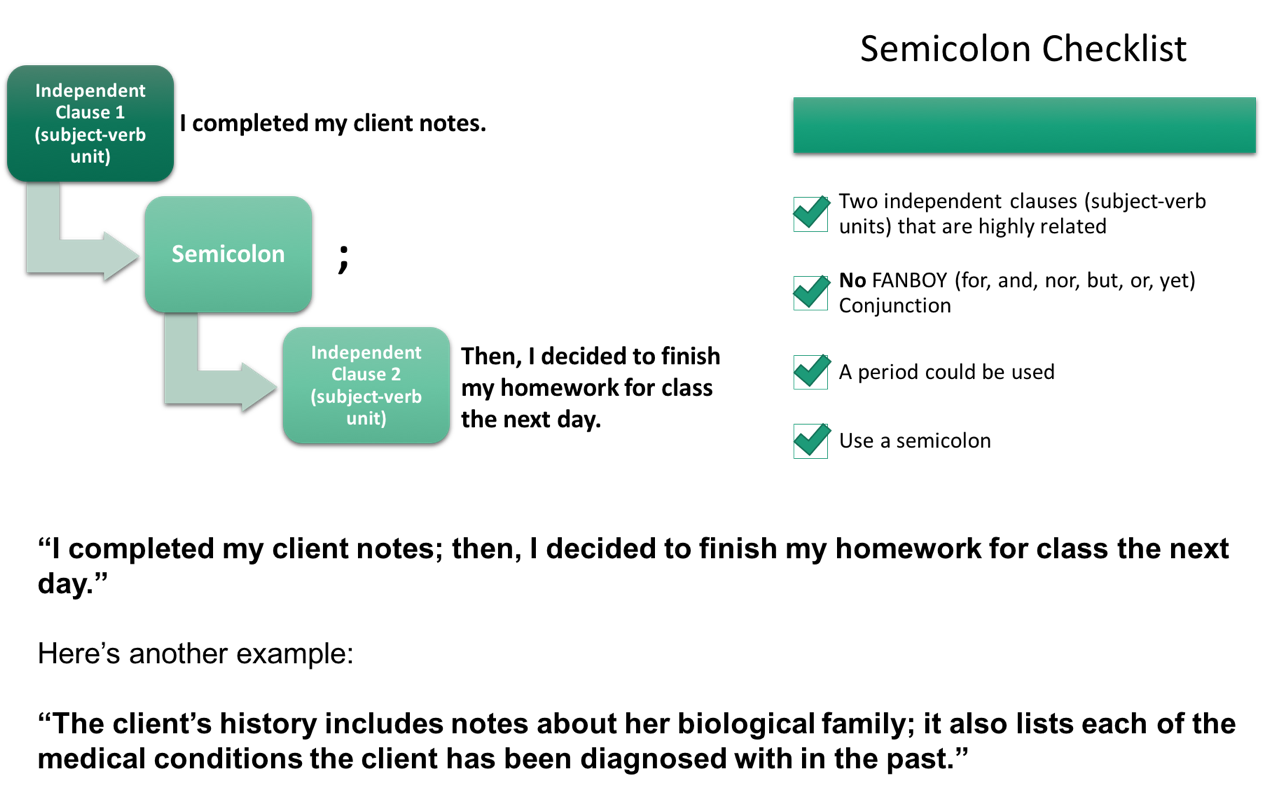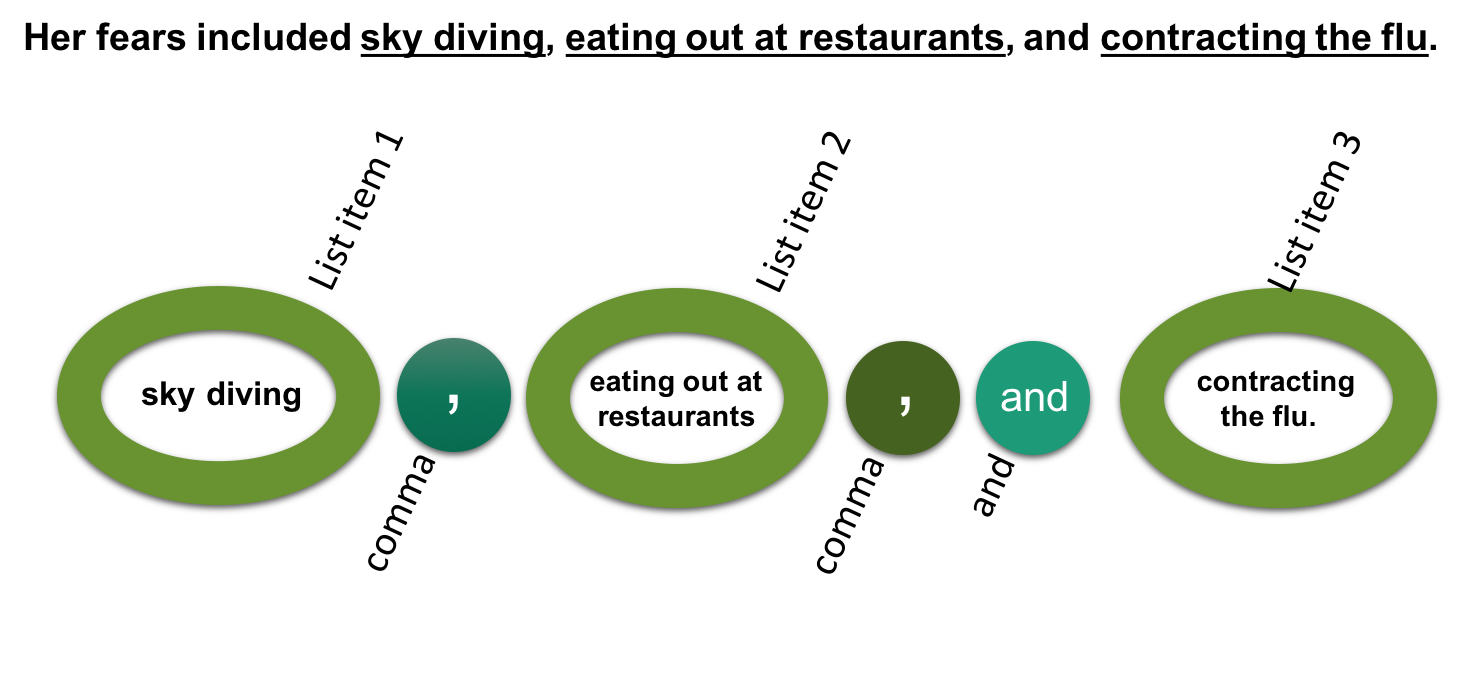The following are the comma, semicolon, and colon rules you need to know when writing in APA Style.
NONESSENTIALS
Use commas to set off nonessential information in the middle of a sentence and to set off nonessential clauses that begin with which.
“Nonessential” refers to information that could be omitted from the sentence leaving a complete sentence (a subject-verb unit expressing a complete idea) that retains the main idea you wish to express.
The end result looks like this:
INTRODUCTORY CLAUSES
If your sentence begins with a phrase other than the subject, this is called an introductory element.
Commas follow or surround introductory phrases, clauses, and elements to indicate to the reader that the main clause containing the sentence subject and the main verb of the sentence are yet to come (e.g., In the beginning, I did not know comma rules.).
Introductory elements are sometimes phrases from the sentence that are transposed or moved to the front of the sentence out of their natural sentence order. Commas are used to indicate this as well (e.g.,
Because I did not know comma rules, I visited the OCWC website.).
The end result should look like this:

JOINING INDEPENDENT CLAUSES WITH A COMMA
Use commas to connect two independent clauses joined by a coordinating conjunction.
An independent clause is a clause (part of a sentence) that could be a complete sentence on its own. To join multiple independent clauses, coordinating conjunctions can be used. Coordinating conjunctions are words such as the FANBOYs:
For,
And,
Nor,
But,
Or,
Yet. They add information on the relationship between two independent clauses, such as contradiction, summation, or addition.
The end result should look like this:
JOINING INDEPENDENT CLAUSES WITH A SEMICOLON
A semicolon also links two clauses, but in the case of the semicolon, the clauses must both be independent clauses. A semicolon serves the same function as either (a) a period or (b) a comma + a coordinating conjunction. When you use a semicolon, you do not need to add that coordinating conjunction.
The end result should look like this:

DELINEATING LISTS
Commas also help writers delineate words or phrases in a list. To join multiple elements in a list, insert a comma between each item, for example: “I love commas, semi-colons, and colons”.
Notice the comma before the “and” and final item in the list above? This is called a serial comma (also known as the Oxford comma), and it is required when writing in APA style.
When listing words or phrases, if you have three or more in the list, then you need to place a comma before the coordinating conjunction (and, or) that precedes the final element in the list.
The end result should look like this:

___________
Use a colon after a complete introductory clause (one that could be its own sentence, aka an independent clause) to introduce a final phrase or thought or clause that illustrates or amplifies the initial clause.
The end result should look like this:
_____________
NOTE: Do not use a colon to introduce a list that begins with the phrase
such as or
including as generally use of these phrases means that what precedes the list is not an introductory clause.
I have several favorite colors, including: blue, green, and purple.
I have several favorite colors, including blue, green, and purple.
Bold colors, such as: blue, green, and purple, are common favorites among kids.
Bold colors, such as blue, green, and purple, are common favorites among kids.
TAKE THE QUIZ
WHERE TO FIND MORE INFORMATION
For more information about commas, semicolons, and colons in APA Style, see pages 88 to 90 of the Publication Manual, Sixth Edition (4.03 Comma, 4.04 Semicolon, and 4.05 Colon).
ADDITIONAL RESOURCES
BACK TO...